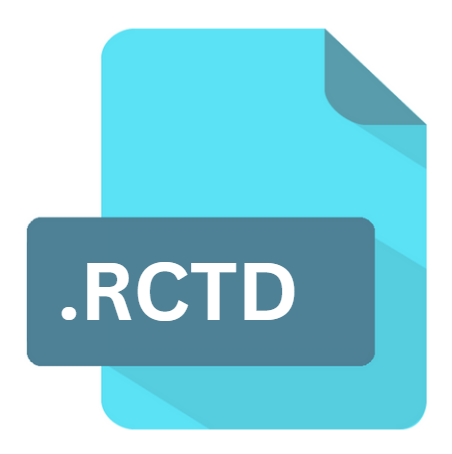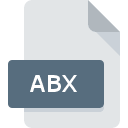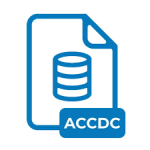.RCTD File Extension

RabbitCT Dataset
| Developer | N/A |
| Popularity | |
| Category | Database Files |
| Format | .RCTD |
| Cross Platform | Update Soon |
What is an RCTD file?
.RCTD files are primarily used to store RabbitCT Dataset information. These datasets consist of three-dimensional (3D) images obtained through computed tomography (CT) scanning of rabbit subjects.
Each .RCTD file encapsulates a comprehensive set of data representing the anatomical structure of a specific rabbit specimen.
More Information.
The inception of the RabbitCT Dataset can be traced back to the growing need for high-quality anatomical data in rabbit research.
Historically, obtaining detailed anatomical information in rabbits posed challenges due to their smaller size compared to humans and other commonly studied animals. CT imaging emerged as a solution, offering precise 3D representations of rabbit anatomy without the need for invasive procedures.
The initial purpose of .RCTD files were to serve as a standardized format for storing RabbitCT Dataset information. By consolidating data into a single, easily accessible file format, researchers could efficiently analyze and share anatomical data across different projects and institutions.
This standardization promoted collaboration and facilitated advancements in diverse fields, including veterinary medicine, biomedical engineering, and pharmaceutical research.
Origin Of This File.
The RabbitCT Dataset and its associated .RCTD file extension find their origins in the intersection of medical imaging and biological research.
CT scanning, a non-invasive imaging technique, has been widely employed in both human and veterinary medicine to visualize internal structures with exceptional detail. The RabbitCT Dataset was curated to facilitate studies focused on rabbit anatomy, physiology, and pathology.
File Structure Technical Specification.
.RCTD files adhere to a specific structure optimized for storing 3D image data acquired from CT scans. The technical specifications of these files typically include:
- Header Information: Contains metadata such as file version, creation date, and image dimensions.
- Voxel Data: This represents the actual 3D image data in a voxel grid format, where each voxel corresponds to a unique point in 3D space.
- Anatomical Labels: Optionally, .RCTD files may include labels or annotations identifying different anatomical structures within the scanned subject.
These files may utilize various compression techniques to reduce storage requirements while maintaining image quality. Common compression algorithms include lossless methods like gzip and lossy methods like JPEG.
How to Convert the File?
Converting .RCTD files to other formats may be necessary for compatibility with specific software applications or analysis workflows. Several tools and methods can facilitate this conversion process:
- Specialized Software: Dedicated software packages designed for working with medical imaging data often support conversion between different file formats, including .RCTD. These tools may offer options for exporting data in common formats like DICOM or NIfTI.
- Custom Scripts: Researchers with programming expertise can develop custom scripts or pipelines to convert .RCTD files to desired formats. Libraries such as SimpleITK (Simple Insight Segmentation and Registration Toolkit) in Python provide functionality for reading and writing medical image data in various formats.
- Online Converters: Some online platforms offer file conversion services, allowing users to upload .RCTD files and convert them to alternative formats. However, caution should be exercised when using online converters to ensure data privacy and security.
Advantages And Disadvantages.
Advantages:
- Comprehensive Data: .RCTD files encapsulate detailed 3D anatomical information, providing researchers with a comprehensive view of rabbit anatomy.
- Standardization: By adhering to a standardized file format, .RCTD files promote interoperability and facilitate data sharing among researchers and institutions.
- Compatibility: Many software tools and libraries support the .RCTD file format, ensuring compatibility with existing analysis pipelines and visualization platforms.
Disadvantages:
- Storage Requirements: Due to the high-resolution nature of CT imaging data, .RCTD files can consume significant storage space, especially when dealing with large datasets or high-dimensional scans.
- Processing Overhead: Analyzing and manipulating .RCTD files may require substantial computational resources, particularly for tasks like image segmentation and feature extraction.
- Limited Accessibility: While .RCTD files are widely used within research communities familiar with rabbit anatomy, but they may not be as accessible to individuals outside these specialized fields.
How to Open RCTD?
Open In Windows
- Software applications like 3D Slicer, ITK-SNAP, and OsiriX MD are compatible with .RCTD files and can be installed on Windows-based systems for viewing and analysis.
Open In Linux
- Many medical imaging software packages, including 3D Slicer and ITK-SNAP, offer Linux versions that can be used to open .RCTD files on Linux-based systems.
Open In MAC
- Similarly, 3D Slicer and OsiriX MD are available for macOS and support .RCTD file playback and manipulation.













